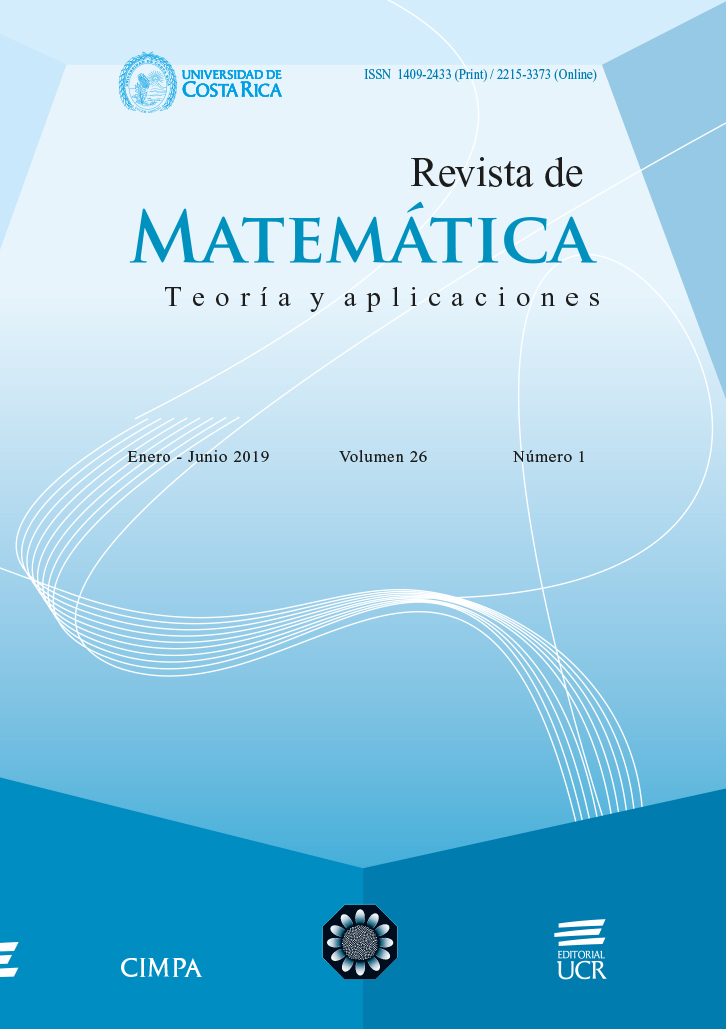Abstract
The growing interest in the study of volatility for series of financial instruments leads us to propose a methodology based on the versatility of the Sequential Monte Carlo (SMC) methods for the estimation of the states of the general stochastic volatility model (GSVM). In this paper, we proposed a methodology based on the state space structure applying filtering techniques such as the auxiliary particles filter for estimating the underlying volatility of the system. Additionally, we proposed to use a Markov chain Monte Carlo (MCMC ) algorithm, such as is the Gibbs sampler for the estimation of the parameters. The methodology is illustrated through a series of returns of simulated data, and the series of returns corresponding to the Standard and Poor’s 500 price index (S&P 500) for the period 1995 − 2003. The results show that the proposed methodology allows to adequately explain the dynamics of volatility when there is an asymmetric response of this to a shock of a different sign, concluding that abrupt
changes in returns correspond to high values in volatility.
References
Black, F.; Scholes, M. (1973) “The pricing of options and corporate liabilities”, The Journal of Political Economy 81(3): 637–654.
Carneiro, P.; Hansen, K.; Heckman, J. (2003) “Estimating distributions of treatment effects with an application to the returns to schooling and measurement of the effects of uncertainty on college choice”, International Economic Review 44(2): 361–422.
Chib, S.; Nardari, F.; Shephard, N. (2002) “Markov chain Monte Carlo methods for stochastic volatility models”,Journal of Econometrics 108(2): 281–316.
Clark, P. (1973) “A subordinated stochastic process model with finite variance for speculative prices”, Econometrica 41(1): 135–155.
Danielsson, J. (1994) “Stochastic volatility in asset prices: estimation with simulated maximum likelihood”, Journal of Econometrics 64: 375–400.
Danielsson, J.; Richard, J. F. (1993) “Accelerated gaussian importance sampler with application to dynamic latent variable models”, Journal of Applied Econometrics 8(1): 153–173.
Del Moral, P.; Doucet, A. (2003) “On a class of genealogical and interacting metropolis models”, in: J. Azéma, M. Emery, M. Ledoux & M. Yor (Eds.) Séminaire de Probabilités XXXVII, Springer, Berlin: 415–446
Doucet, A.; De Freitas, N.; Gordon, N. (2001) “An introduction to sequential Monte Carlo methods”, in: A. Doucet, N. De Freitas & N. Gordon (Eds.) Sequential Monte Carlo Methods in Practice, Springer, New York: 3–14.
Doucet, A.; Johansen, A. (2011) “A tutorial on particle filtering and smoothing: fifteen years later”, in: D. Crisan & B. Rozovskii (Eds.) The Oxford Handbook of Nonlinear Filtering, Oxford University Press, New York: 656–704.
Gallant, A.; Hsieh, D.; Tauchen, G. (1991) “On fitting a recalcitrant series: the pound/dollar exchange rate, 1974–1983”, in: W. Bartnett, J. Powell & G. Tauchen (Eds.) Nonparametric and Semiparametric Methods in Econometrics and Statistics, Cambridge University Press, New York: 199–240.
Ghysels,E.;Harvey,A.C.;Renault,E.(1996)“Stochastic volatility”,in: C. R.Rao & G.Maddala(Eds.) Statistical Models in Finance,North-Holland, Amsterdam: 119–191.
Gordon, N. J.; Salmond, D. J.; Smith, A. F. M. (1993) “Novel approach to nonlinear/non-Gaussian Bayesian state estimation”, IEE Proceedings-F 140(2): 107–113.
Harvey,A.;Ruiz,E.;Shephard,N.(1994)“Multivariate stochastic variance models”, The Review of Economic Studies 61(2): 247–264.
Heidelberger, P.; Welch, P. (1983) “Simulation run length control in the presence of an initial transient”, Operations Research 31 (6):1109–1144.
Hull,J.;White,A.(1987)“The pricing of options on assets with stochastic volatilities”, The Journal of Finance 42(2): 281–300.
Isard,M.;Blake,A.(1998)“Condensation-conditional density propagation for visual tracking”, International Journal of Computer Vision 29 (1): 5–28.
Jacquier, E.; Polson, N.; Rossi, P. (1994) “Bayesian analysis of stochastic volatility models”, Journal of Business and Economic Statistics 12(4): 371–389.
Kim, S.; Shephard, N.; Chib, S. (1998) “Stochastic volatility: likelihood inference and comparison with ARCH models”, The Review of Economic Studies 65(3): 361–393.
Latané, H.; Rendleman, R. (1976) “Standard deviations of stock price ratios implied in option prices”, The Journal of Finance 31(2): 369–381.
Liu, J. S. (2001) Monte Carlo Strategies in Scientific Computing.Springer, New York.
Liu, J. S.; Chen, R. (1998) “Sequential Monte Carlo methods for dynamic systems”, Journal of the American Statistical Association 93 (443): 1032– 1044.
Omori,Y.;Chib,S.; Shephard,N.; Nakajima,J. (2007) “Stochastic volatility with leverage: fast and efficient likelihood inference”, Journal of Econometrics 140 (2): 425–449.
Pitt, M.; Shephard, N. (1999) “Filtering via simulation: auxiliary particle filters”, Journal of the American Statistical Association 94 (446): 590–599.
Shephard, N.; Pitt, M.K. (1997) “Likelihood analysis of non-Gaussian measurement time series”, Biometrika 84(3): 653–667.
Shephard, N. (2005) Stochastic Volatility: Selected Readings. Oxford University Press, United States
Tauchen, G.; Pitt, M. (1983) “The price variability-volume relationship on speculative markets”, Econometrica 51(2): 485–505.
Taylor, S. (1986) Modelling Financial Time Series. John Wiley & Sons, New York.
Watanabe, T. (1999) “A non-linear filtering approach to stochastic volatility models with an application to daily stock returns”, Journal of Applied Econometrics 14(2): 101–121.
Yu, J. (2005) “On leverage in a stochastic volatility model”, Journal of Econometrics 127(2): 165–178.





